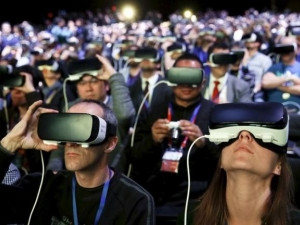
The Middle East and Africa (MEA) augmented and virtual reality (AR/VR) market will grow strongly over the next five years, posting annual growth rates of more than 100% across the 2016-2020 period.
This is according to research firm IDC's recent 'Worldwide Augmented and Virtual Reality Spending Guide'.
According to the report, the global ICT and advisory services firm expects the MEA market to expand from a relatively moderate value of $181.59 million this year to top a staggering $6 billion in 2020.
"The concept of augmented and virtual reality is still relatively new for both vendors and consumers alike, says Saad El Khadem, a research analyst at IDC Middle East, Africa, and Turkey.
"However, the global success of Pokémon Go has brought the concept to a much broader audience. And with industry powerhouses such as Microsoft, Samsung, Google, Sony, and Facebook pushing the technology to the masses, end-user awareness and familiarity is only going to grow."
IDC expects consumers to account for more than $100 million of the region's AR/VR spending in 2016.
The research firm says this represents a share of around 56%, and makes the consumer segment the biggest in the region as things stand.
According to TrendForce, VR has made significant progress in the consumer market as major technology companies roll out competing products. It says the 9 million out of the estimated 105 million units wearable devices shipped this year will be VR-based products.
However, IDC expects the consumer segment's share of the market to steadily fall over the forecast period as the commercial segment sees more and more use cases emerge for the technology.
From 2018 onwards, the consumer segment will cease to be the biggest spenders in the market, giving way to segments such as distribution and services as well as manufacturing and resources.
"We forecast spending on AR/VR hardware elements to grow from $118 million in 2016 to reach more than $3.2 billion in 2020, says El Khadem.
"There are currently offerings spanning all price points, from thousands of dollars at the top end down to tens and hundreds of dollars - or even free in some cases - at the bottom."
El Khadem says the main challenge is getting the technology into the hands of the masses, but even more important is the need to provide consumers with compelling content that proves this is a viable technology capable of adding meaningful value to their lives."
Research firm MarketsandMarkets says the global augmented reality market is expected to reach $117.40 billion by 2022 at a compound annual growth (CAGR) rate of 75.72% over the period of 2016 and 2022.
The global virtual reality market is expected to reach $33.90 billion by 2022 at a CAGR of 57.84% over the period of 2016 to 2022.
According to Research and Markets, the growth rate is expected due to increase in the awareness about these technologies among the consumers, mass scale adoption of AR and VR in various industry verticals, and integration of AR and VR to create mixed reality for future applications.
"A definite presence of smartphones and tablet computers, high mobility and versatility, an increasing interest of large tech corporations, and technological advancement has led to the widespread emergence of the global AR and VR market."
Share